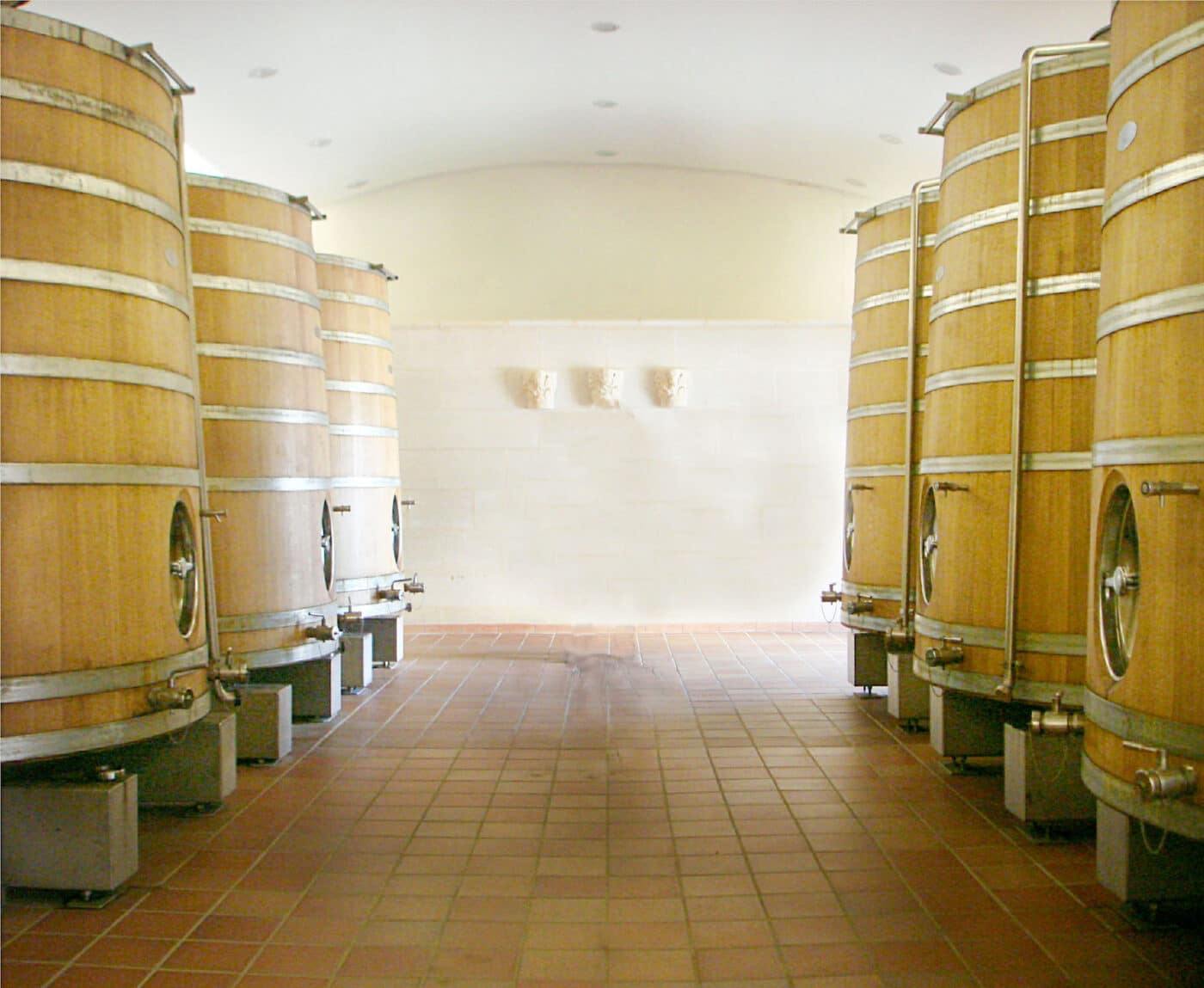In Part 1, our young guest writer Jack Maltus gave us a summary of the story a winemaker follows from selecting the grapes up to the first fermentation. In this, our Part 2 we continue the story through the fermentation process all the way to the bottling.

5. First Fermentation:
When is time to start inoculating, the winery now needs to be carefully looked after, this is because of heat controls and the slight yet done before possibility that a take could be accidentally inoculated too early. Depending on what tanks were put in place will decide how smoothly this process will go. Stainless Steel tank are very susceptible to temperature changes which can in turn if get to cold or hot kill of the yeast during the process, Cement vats which are used by Cheval Blanc but typically used in hotter environments keep their temperature. Although unlike Stainless Steel where temperature can be easily regulated, cement vats will take longer for a temperature change to take place.
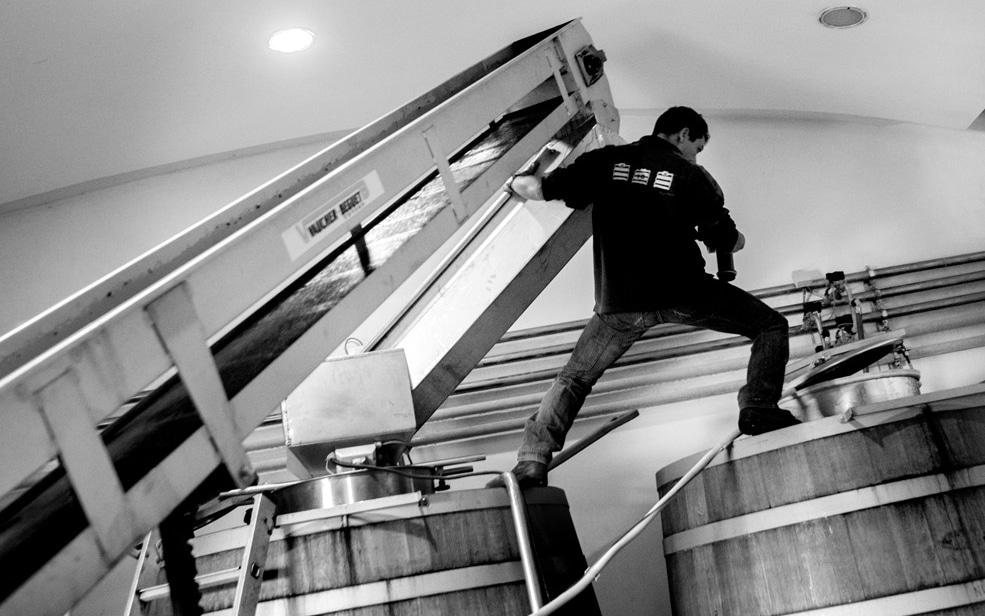
The other aspect which is not as often spoken about but more simply “It’s about the Look”, in countries like South Africa, which wine tourism is a huge part of the culture and tours around the winery happen almost every day. Assessing whether you’re in a country where wine tourism takes place the wine makers or shareholders may opt for a winery and all its equipment to be appealing to the eye. It may be all about the brand.
Having inoculated and assuming the yeast (of which there are many different types) has reacted, pump overs (essentially the process whereby using a pump, the juice get pumped back over to break the cap so that the juice have more contact with the cap, to create deeper colour and fruitiness) and the addition of first tannins then nutrients are the next step in the process. Pump overs, open or closed air simply allow for further mixing of the juice against the skins. This is because the juice will go to the bottom and the skins rise to the top, so as the pump overs are done usually one in the morning and one in the evening, sometimes three, the juice will have to contact with the skin and thus creating that deep red colour.
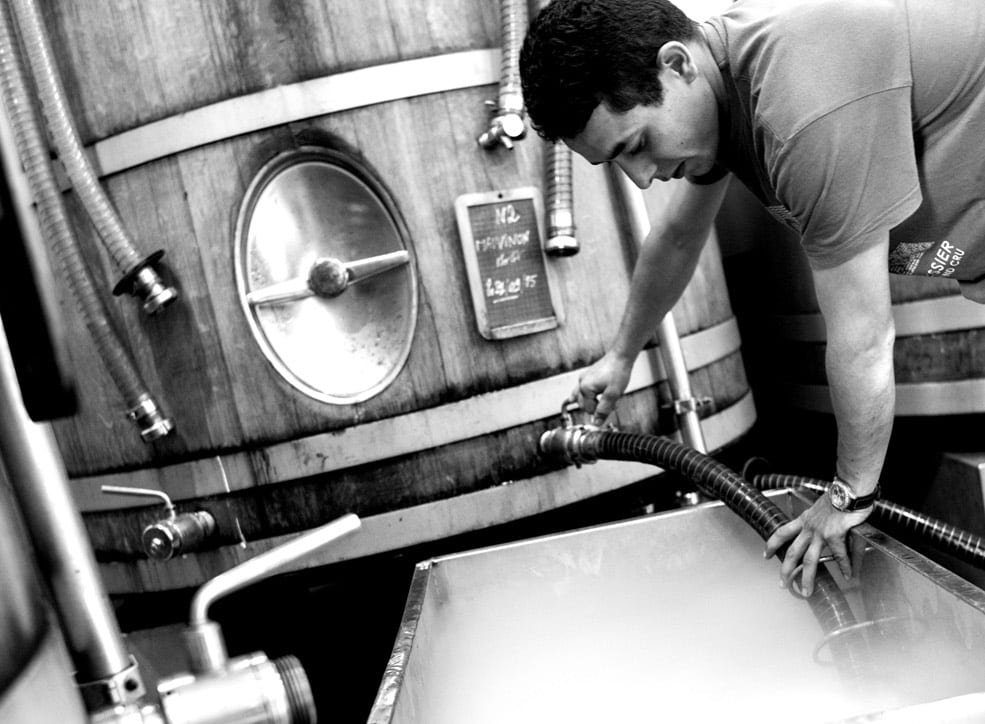
From the beginning of the process the bailing (density) of the juice will be high and the temperature moderate, 25-27B (Baling) is the right place with a temperature of 23-25 degrees Celsius. Having added and the Yeast reacting the inside temperature will heat up due to the reaction and the fermentation of the juice. This key to this is to keep the process smooth and moderately longer (1-2 weeks) so that the yeast has time to eat all the sugars, The temperature staying within a similar region and the balling dropping comfortably down.
If that’s not the case and the sugars are too high, and the yeast may be what’s called “Stressed” and this results in off flavours with the end product. However not all winemakers are looking to produce the same wine, some who produce sweet wine may choose to kill the yeast purposefully prematurely, so the sugar levels are higher, and the ethanol content is higher which leads to higher alcohol level which is how Port and typically certain red sweet wines are produced.
Once the balling has dropped to/pass 0 it is ready add MLF bacteria and start pressing the skins within a few days. Although the pressing process is not dangerous the process of getting the skins out of the tank can, this is because the one of the biproducts of the fermentation is CO2 and it has happened whereby someone in the tank has an unfortunate early death. Choosing a press is completely up to the winemaker which can also affect the quality of the wine, the two most common is a “Batch Press” and what is referred as a “Bladder Press”. The Batch press is considered more of an “Old-School” method whereby the fruit is loaded into the basket and a press will go down squeezing the juices out of the skins, the Bladder press is where a rubber bladder is placed inside a horizontal drum, where air pressure is applied to squeeze the fruit. The main advantages of this type of press are that they can handle amounts at one time than a typical Batch Press and there’s less likelihood of unwanted oxidation (By now we would consider the wine to be more fragile and we don’t want oxygen to come in contact). All the juices from the original tank and now the press is pumped through to usually a smaller stainless-steel tank where we prepare for the barrel work and secondary fermentation.
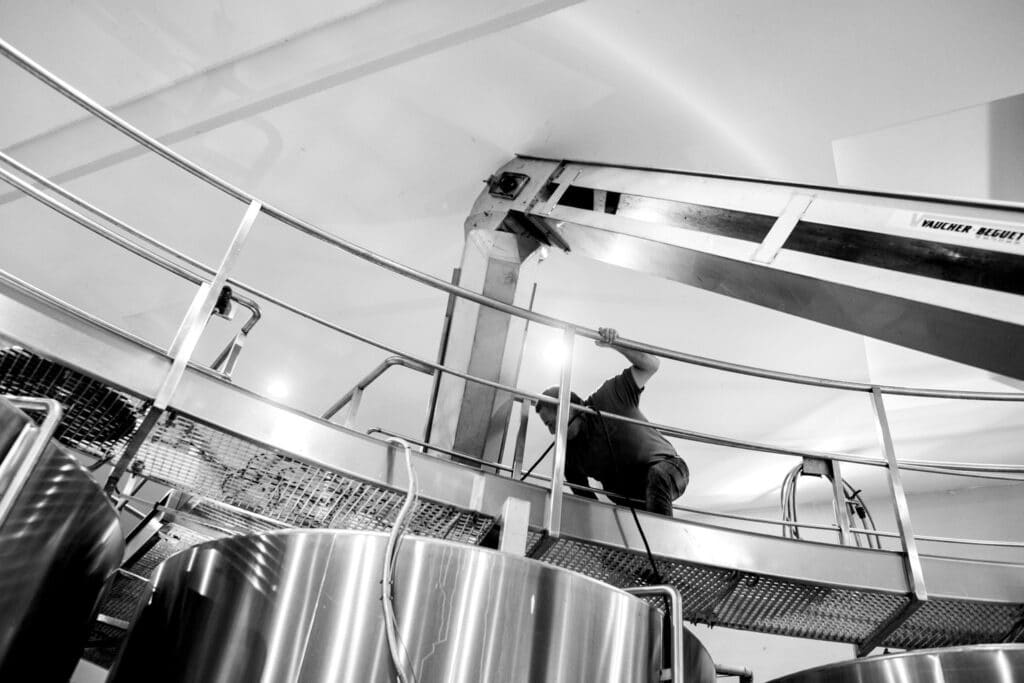
6. Barrels and Malolactic Fermentation (MLF):
After the pressing process all the wine is then moved into barrels for 6 to 30 months, this is because barrels can add different flavours/aromas to the wine such as oak, hazelnut, vanilla even smokiness and it is a perfect environment for malolactic fermentation to take place.
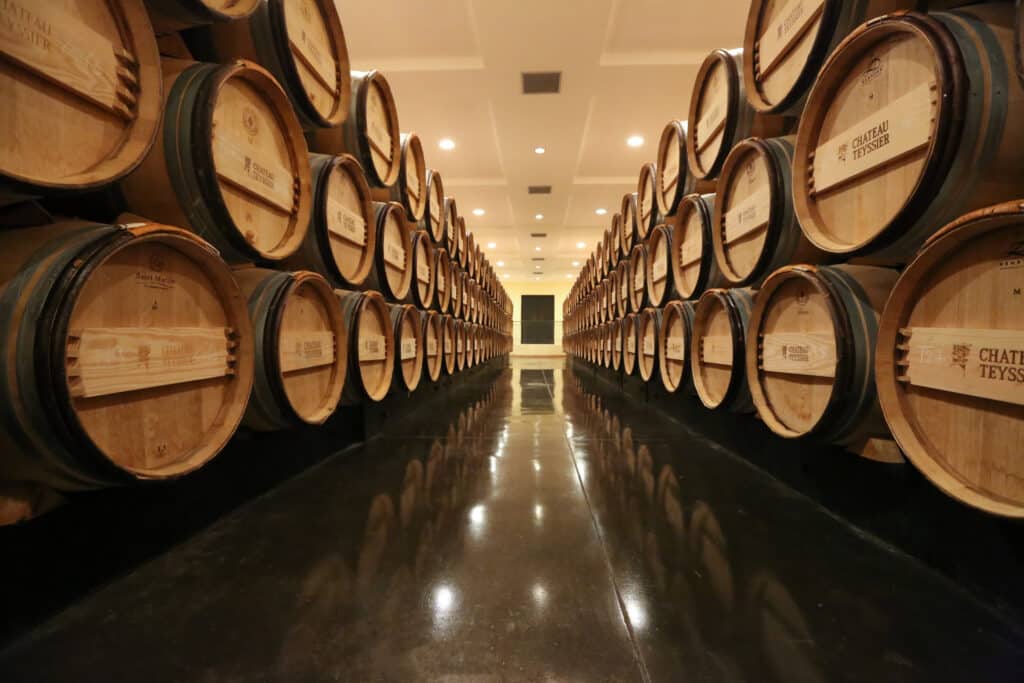
Malolactic fermentation (secondary fermentation) is a bacteria which is added to the wine when the primary fermentation has finished to kill off any remaining bacteria by converting malic acid into lactic acid along with CO2. The purpose of this is to decrease acidity, add creamy complexity of flavours to soften the wine and by doing this in barrels it prevents the process to happen during the bottling stage which would result in cloudy wine.
During this process, not only is getting the malolactic fermentation need to be done right, but the barrels also themselves need to be the right type and size because larger barrels result in less oak lactones and oxygen. In addition, there are two main types of oak used, American and European. These two provide opposite styles to age to the wine in.
American- is best for bolder and structured wine. – Cabernet sauvignon
European- is best for lighter and subtle wine. – Pinot Noir
Winemakers also use certain different methods to get the aromas they want from these barrels; toasting is a method where when the barrel is made it is exposed to fire.
Minimal toast- to create vanilla aromas
More toasted- to create smoky aromas
There’s always been a debate within the winemaker’s world of which barrels are better, but the reality is that it’s based on the individual and what’s been grown in the vineyard. However, there is an alternative to using oak which is stainless steel. Stainless steel is used because it will have no impact on the flavours of the wine and because it doesn’t allow for any contact between the wine or oxygen which helps white wines retain fresh fruit aromas.
7. Blending:
Wine blending is the process where the winemaker will then need to combine their different wine varieties that they have produced to the composite what will be the final product. This process is usually a long and the winemaker / winemakers will be going from barrel to barrel trying all sort of variations to produce the best possible wines. Although this process can happen at many different stages after malolactic fermentation, some chose to blend earlier than others. In France, winemakers do this pre en-primeur so that they can anticipate on the wine they have created and to give an idea to journalists of what to expect and score. This process is what ultimately defines what the winemaker is capable of and determines whether they produce what’s considered fine wine.
8. Filtration, Clarification & Bottling:
The first stage of Clarification is fining, which is first because it removes the larger amount residual sediment, then the filtration will furtherly clarify and make the wine have a healthier appearance by removing most of the sediment left. After this process the wine is then put into bottles where eventually they’re labelled and sold.
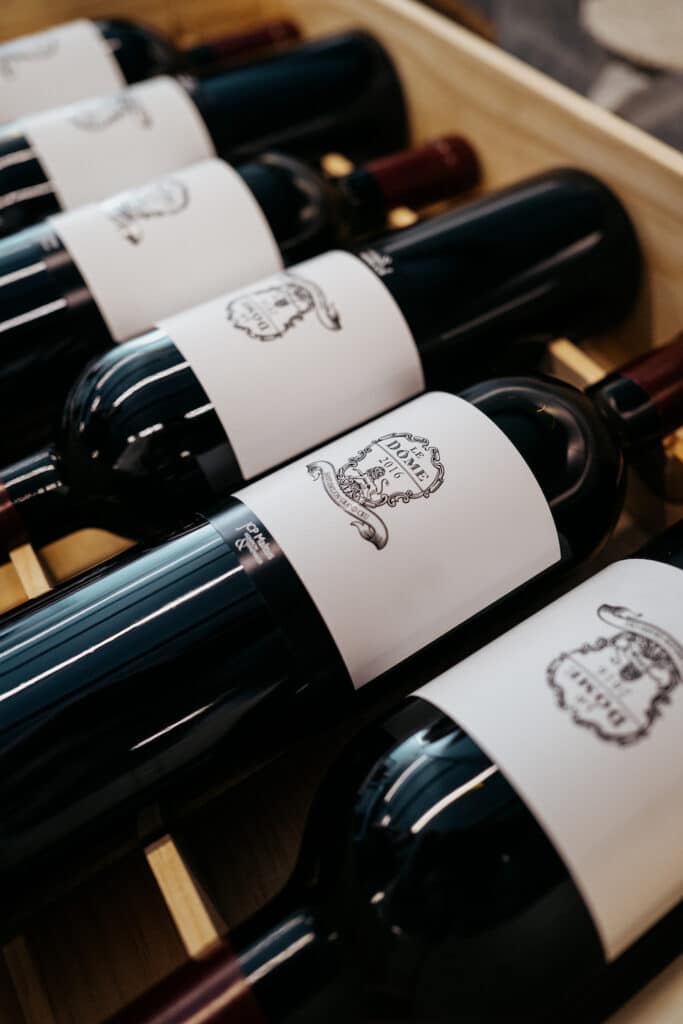
Contributors Jack Maltus and Michael Baynes
